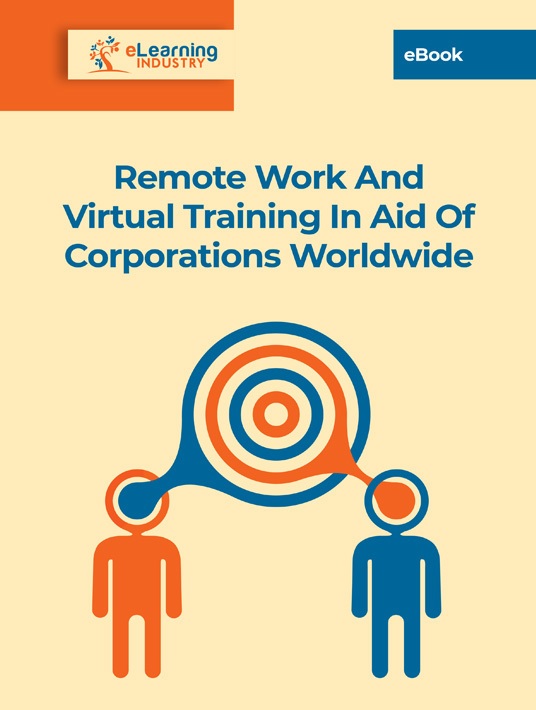Plan A Virtual Event With Web Conferencing Software
You’ve prepped for months. The site is booked, travel arrangements are made, and all the printed materials are hot off the press. Then disaster strikes. It might be a global outbreak, natural disaster or localized incident that derails your plans. But don’t notify attendees of the cancellation just yet. There is a way to take your training online and host your L&D event on a global scale. In fact, you can even expand your guest list and add more industry experts to the line-up because there aren’t any geographical limitations. No more travel fees, site rentals or printing costs to worry about. Here are 8 insider tips to choose and use the best web conferencing software for your next virtual event.

1. Use An Online Directory To Narrow The Options
An online directory features the leading web conferencing tools for your industry. This allows you to narrow the options based on your use case and budget. You should clarify your online training objectives, desired outcomes, and price range beforehand. How much can you realistically spend on the video conferencing tool? Which gaps must it fill to improve online training ROI? The online directory must also be unbiased. No paid reviews or exaggerated claims.
2. Compile A List Of Essential Features
Another key consideration is web conferencing software features. Some of the most popular functions are whiteboard, instant messaging, and recording tools. These allow you to host more interactive online training sessions and maximize benefits for those who can’t attend the live event. Compile a must-have list to get the best value for money. Do you need a web conferencing tool with desk-to-desk calls or two-way audio? Are video streaming and screen sharing at the top of your shopping list?
3. Only Consider Web Conferencing Tools With Social Learning Support
Successful L&D events have one thing in common: audience participation. You need web conferencing software that facilitates two-day dialogue. Attendees should be able to interact with peers, online instructors, and presenters to get the most of the eLearning experience. Key social learning features to look for are integrated discussion boards, instant messaging, and breakout rooms. Participants can also use these features to fill knowledge gaps immediately thanks to peer-based support/feedback.
4. Mobile Accessibility Is A Must
Keep in mind that most attendees use mobile devices to log in to the web conferencing platform. Thus, your new web conferencing software must be accessible anytime, anywhere. You should also develop presentations from a multiplatform-friendly perspective. For instance, omit small text blocks or visuals that are difficult to see on the small screen and give users the opportunity to switch on subtitles if they have special training needs or headphones aren’t an option. You may not have the time to upload the entire event script word-for-word. However, you can summarize the key takeaways in bulleted lists so that everyone gets the same benefit.
5. Customize The Platform To Reflect Your Brand Identity
Once you’ve chosen the best web conferencing tool for your L&D event, explore the customization options to add a personal touch. You should be able to incorporate your logo, color scheme, and other branding elements. The event must feel like an extension of your online training program so that attendees know what to expect. This also shows that you’ve given the webinar your stamp of approval. Every aspect of the platform should fall in line with your messaging and overall tone.
6. Send Evites And Automatic Reminders To Boost Attendance
There’s typically not as much planning involved for attendees when you host online events, as opposed to on-site workshops or seminars that require flights, hotel bookings, etc. This means that your virtual participants may forget about the upcoming event. Busy work schedules and personal lives get in the way. However, you can set up automatic reminders to help them remember. Evites are also ideal for attendees who’ve signed up for tie-in events. For instance, people who have registered for your sales skills webinar might benefit from the new product knowledge or COI compliance workshop.
7. Record And Edit The Event To Expand Audience Reach
There are numerous reasons to record a live event. Firstly, it’s a valuable reference tool for attendees who need to refresh their memory. They can go back to the video whenever necessary to brush up on the topics or clarify confusing parts. There’s a lot going on during these live sessions, from peer chats and slideshows to Q&As. It’ easy to get lost in the moment and miss a key idea or concept. You can also add the recorded session to your online training library and expand audience reach. People who missed the original event can still glean all the insights and pointers from the presentation. Another perk is repurposing the raw footage for other online training objectives, for example, editing it to 5-minute clips that are just right for your microlearning repository.
8. Follow Up And Gather eLearning Feedback
Does the web conferencing tool feature real-time analytics? Can you track attendance and engagement? You must be able to evaluate event stats and manage users to continually hone your hosting strategy. It’s also essential to provide follow-up tools for knowledge reinforcement. For example, a list of online training resources that focus on relevant skills or training topics. Finally, gather eLearning feedback from attendees to gauge the overall eLearning experience. Conduct surveys/social media polls or send personalized emails to spot areas for improvement.
Unexpected emergencies are often a catalyst for companies to move their events online and finally ride the learning tech trend and see where it leads. Then they’re so successful that hosts decide to make it permanent and rely on their web conferencing tool for future workshops and webinars. After all, it reduces costs and improves attendee engagement. You can even record the event and upload it to your online training catalog for extra revenue.
Organizations are in need of innovative solutions in order to overcome the challenges of remote working and retain the high quality of their L&D program. The eBook Remote Work And Virtual Training In Aid Of Corporations Worldwide provides insightful tips and secrets on how virtual training can help you keep your team engaged and still achieve your business objectives. Find out how investing in virtual training solutions can eliminate the stress and facilitate the transition to working remotely.







